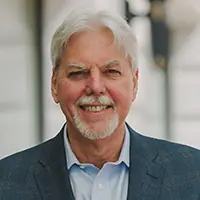
2011 Acquire Or Be Acquired
A combination of banker fatigue, high regulatory costs and few opportunities for growth are putting enormous pressures on small banks and will lead to a wave of consolidation in the banking world, speakers told a crowd of about 588 people attending Bank Director’s Acquire or Be Acquired conference in Scottsdale, Arizona, on Jan. 30 through February 1.
A record number of bankers and bank directors attended the conference this year, drawn with predictions of future M&A opportunities. They got advice from a host of fellow bankers, who talked about growth strategies and problems to overcome. They got access to dealmakers in the profession, went to roundtable discussions and played mock-acquisition scenarios with their peers.
Keynote speakers included Steve Bartlett, president and CEO of The Financial Services Roundtable, a lobbying group that represents 100 of the nation’s largest financial companies, and John Dugan, former Comptroller of the Currency.
Dugan, who returned to a private sector law firm last winter, Covington & Burlig, told the crowd that the Dodd-Frank Act represents a fundamental shift in regulation. Instead of requiring disclosures, regulators are now telling financial institutions what products to offer and what to charge, he said.
“In the post Dodd-Frank world, like it or not, regulation will play a bigger role for transactions or capital raising,” he said. “The center of the world is moving more toward Washington. I’m not saying that’s a good thing.”
Some investment bankers, such as Bill Hickey, co-head of investment banking at Sandler O’Neill + Partners, told the crowd that banks will need $1 billion in assets to survive, in part because of increased regulatory costs.
Understandably, some community bankers pushed back against that notion since more than 90 percent of U.S. banks and thrifts have less than $1 billion in assets.
Still, with few organic growth opportunities, many bankers are pushing into full-fledged acquisition mode. Gulfport, Mississippi-based Hancock Holding Co. started buying banks within 90 days of Hurricane Katrina, bank president and CEO Carl Chaney told the crowd, showing pictures of his staff literally laundering water-soaked cash in washing machines. The banking company grew from less than $8 billion in assets to more than $20 billion by targeting struggling banks in the region, with its last deal to close this quarter.
Like Chaney, most of the attendees at the conference hoped to end up on the winning end of an equation that may wipe out about 3,000 of the nearly 8,000 banks and thrifts by the end of the decade, according to a prediction of John Duffy, the chairman and CEO of Keefe, Bruyette & Woods.
John Freechack, an attorney who advises financial institutions for Barack Ferrazzano, provided some reassurance to community bankers.
He said people have been predicting the demise of community banks for 20 or 30 years. In particular, the cost of new technology in banking was supposed to have put many of them out of business by now.
“This is a very resilient industry,” he said.

Join OUr Community
Bank Director’s annual Bank Services Membership Program combines Bank Director’s extensive online library of director training materials, conferences, our quarterly publication, and access to FinXTech Connect.
Become a Member
Our commitment to those leaders who believe a strong board makes a strong bank never wavers.



